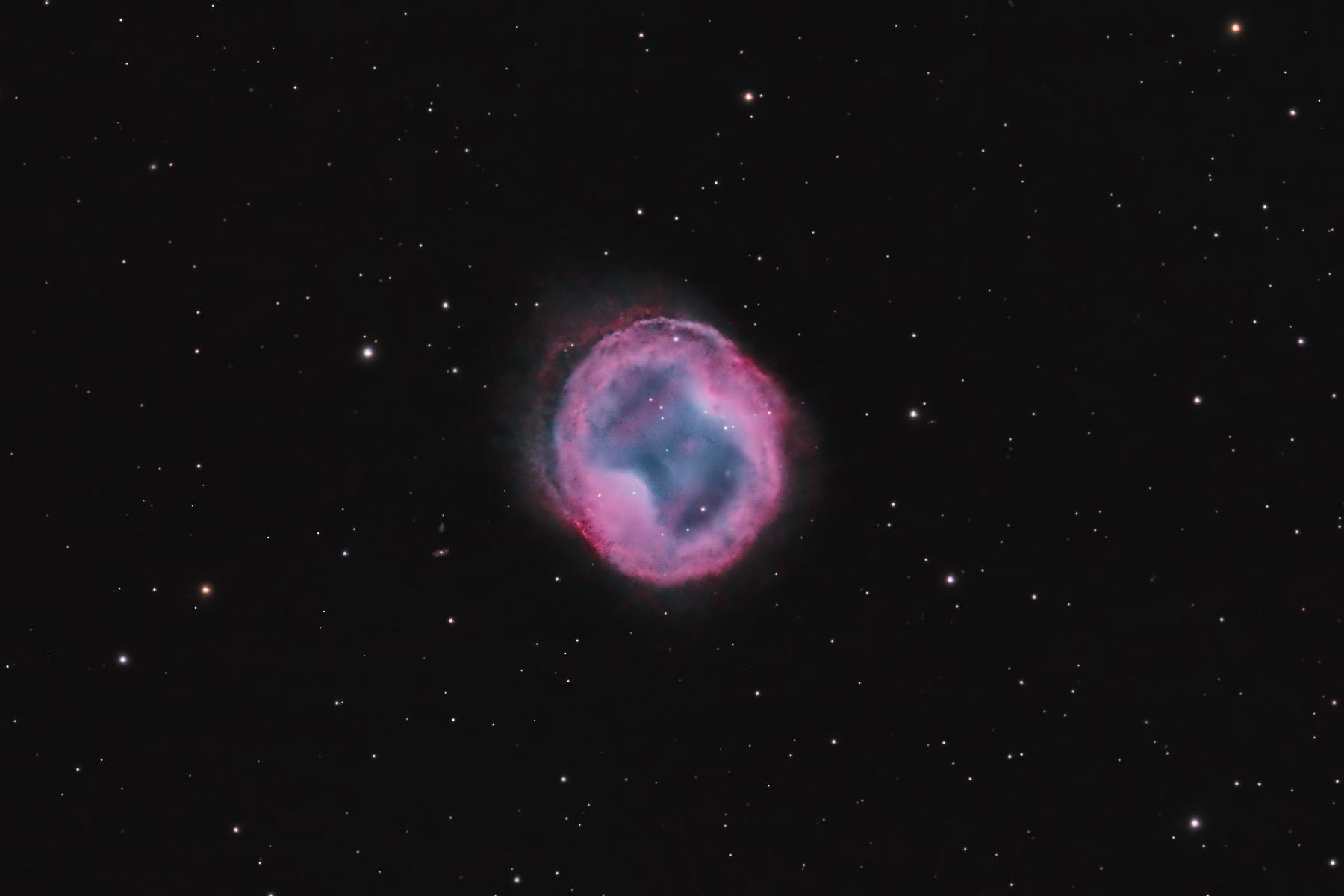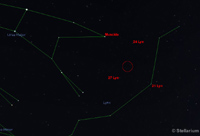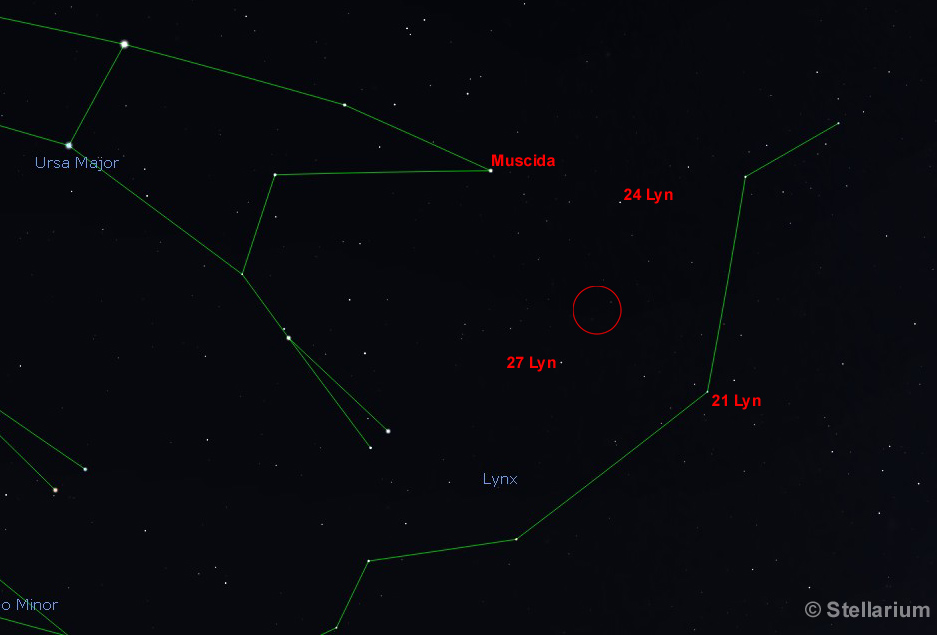Information...
PK 164+31.1 - Headphone Nebula, aka 'Jones-Emberson 1' (JnEr 1) is a 13,000 year old planetary nebula located approx. 1,700 light-years away in the constellation of Lynx.
Having a very low surface brightness (apparent magnitude 17.1), the central white dwarf has a solar mass of 0.63 & magnitude 16.8.
The nebula was discovered in 1939 by American astronomers Rebecca Jones and Richard M. Emberson on photo plates from the Harvard Observatory. It's 'PK' designation comes from two Czechoslovak astronomers Luboš Perek and Luboš Kohoutek, who created a catalogue of planetary nebula in 1967, with the number '164+31.1' referring to it's galactic co-ordinates (galactic longitude of 164°. & latitude of +31°.).
For a higher resolution image see James' astrobin page: https://astrob.in/wl7f9b/0/
For more info. see the Wikipedia and Deep Sky Corner webpages.






